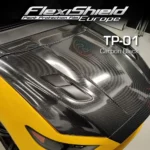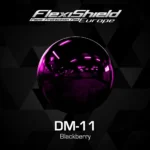Car owners do their utmost to keep their vehicles in pristine condition, but it is not always a piece of cake. Every day, your car comes across numerous threats such as direct sunlight, weather variations, stones, and accidental scraping. The paint of a car may fade if not maintained and this not only has an impact on the aesthetic of the car but also the value as well.
This is why the use of automotive paint protection is mandatory, as it helps to maintain that new look of your car. They can range from owning a brand-new upper-class automobile to having a basic daily driver; getting the right solution can save your car’s finish while enhancing its durability. This guide will outline the viability of the various forms of protection out there and guide you in selecting the most suitable solution for your car.
Different Types of Paint Protection Options:
When it comes to car paintwork protection, there are various ways, which can be employed and each of them has its advantages as well as some disadvantages. Let’s look at each option in detail.

Paint Protection Film (PPF):
Paint Protection Film, also known as PPF car protection, is one of the most effective methods of protecting the paint on a car. It is a thermoplastic urethane that creates a transparent layer over car surfaces, protecting against scrapes, cracks, and other damage.
- Features and Advantages: PPF comes with a self-healing capability, which implies that small scratches can blend with the surface through heat. It is also clear coated or matte depending on the desire to retain the original car appearance.
- Popularity: The auto paint protection film is suitable for all types of cars, whether luxurious brands or regular use cars since it can be applied anywhere such as bumpers, hoods, and mirrors.
Ceramic Coatings:
Ceramic coatings are liquid polymer solutions that are sprayed on the car’s surface to form a hard, shiny layer. They adhere to the paintwork and provide excellent coverage against damages like; dirt, water, and UV rays.
- Long-Lasting Protection: Since they are hydrophobic in nature, they can easily wipe off water and also prevent dirt from adhering to a car’s surface. They also improve the gloss of the car to a metallic sheen.
- Ease of Maintenance: Ceramic coatings are more challenging to apply compared to traditional sealants but let out minimal maintenance work.
Wax and Sealants:
Waxes and sealants are traditional but still effective ways of paintwork protection, especially for those who look for cheap and fast solutions.
- Affordable but Temporary: There are synthetic waxes that have higher durability compared to natural waxes, yet they must be reapplied more often.
- Differences: Natural waxes such as carnauba tend to impart a warmer tone to the look of the paint while the other hand, while synthetic sealants are more about longevity.
Vinyl Wraps:
Most car owners are aware that vinyl wraps serve as a way of enhancing the aesthetics of the vehicle, but it also offers a protective barrier for car paintwork protection.
- Dual Functionality: These wraps enable you to alter the color of your car without affecting the actual paint job.
- Customization Options: Vinyl wraps can be procured in different textures and cuts and may reflect your personality and style while offering basic protection.
Key Factors to Consider When Choosing Paint Protection:
With so many options available, choosing the right solution for your car depends on several factors:
- Cost vs. Durability: Although Clear paint protection film and ceramic coatings are more costly than other options, they provide more durability. Wax and sealants are affordable but would need frequent application.
- Maintenance Needs: Ceramic coatings and PPF barely need touch-ups while waxes require constant reapplication.
- Compatibility: It is important to also note that some of these solutions may not work for all car models or even painted surfaces. The compatibility should be checked with the help of professionals.
Why Does PPF Stand Out?
Despite the variety of choices, PPF car coating still retains its significance for many car owners.
- Advanced Technology: Car PPF film is made out of extremely sturdy materials such as urethane, and its surface resilience makes it highly protective.
- Versatility: Whether it is for the bumpers and hoods, or the entire surface, paint protection film for cars can be tailored for your needs.
- Long-Term Benefits: PPP automotive is different from ordinary waxes or ceramic coating and this shields cars from damages or scratches; therefore, it is worth investing in PPF automotive for value retention.

PPF Maintenance Tips:
To ensure your PPF car wrap lasts as long as possible, follow these simple tips:
- Regular Cleaning: The best way of washing your car is by using a pH-neutral soap as this will not harm the film.
- Avoid Harsh Chemicals: Avoid the usage of rough detergents that may lead to scratching of the clear paint protection film.
- Repair Minor Damage: However, self-healing PPF is capable of healing some minor abrasions on the surface while major damages are best handled by a professional.
Conclusion:
When it comes to touch up paint, the proper selection determines the outcome and longevity of it. From the PPF car protection to the ceramic coatings and vinyl wraps, each solution is distinct with its advantages depending on different needs.
With paint protection car solutions, you get to not only retain the beauty of your car but also extend its worth into the future. Both PPF and ceramic coating have their advantages and disadvantages, so take time to evaluate your needs and consult a trusted professional.
Looking for more information on paintwork protection or perhaps have a specific solution in mind for your car? Get in touch with a certified expert now for paint protection car solutions and feel confident that your car gets the protection that it needs.














